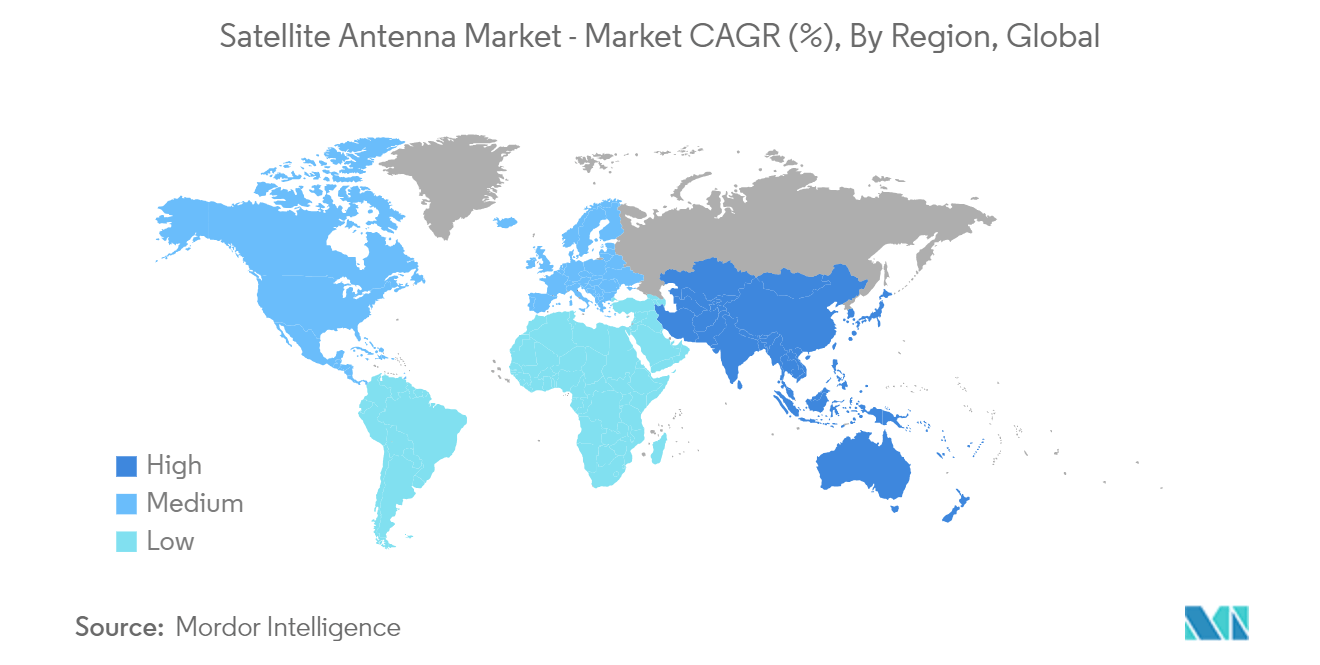Market Trends of Satellite Antenna Industry
Space Application is Expected to Hold Significant Market Share
- The global space industry has been experiencing significant growth and technological advancements, contributing to the increasing demand for satellite antennas worldwide.
- The growing demand for satellite-based communication services is a primary factor driving demand for satellite antennas in the market. With the expansion of global connectivity, there is an increasing need for antennas to facilitate communication between satellites and ground stations.
- In addition, miniaturization and cost reduction advancements are leading to the proliferation of small satellites, including CubeSats and nanosatellites. These small satellites often require smaller, more compact antennas, increasing demand for specialized miniaturized antenna solutions.
- Several players, such as SpaceX, OneWeb, and others, are developing plans for satellite constellations to provide global broadband coverage. ITU said there were around 1.4 billion fixed broadband subscriptions in the previous year, whereas active mobile broadband subscriptions were about 6.9 billion.
- The governments of several countries, such as India, have started space sector reforms to encourage, support, regulate, and provide startups and private companies an opportunity to engage in space operations to grow their market share globally, resulting in increased demand for satellite antennas.
- Thus, increasing demand for satellite antennas in the global space industry is driven by the expansion of satellite communication services, advancements in satellite technology, and growth in high bandwidth applications and is projected to continue during the forecast period.

North America to Hold Significant Market Share
- Satellite antennas are increasingly used in the United States to provide broadband internet access in remote and underserved areas where traditional terrestrial infrastructure is limited or unavailable. Satellite internet services offer a viable solution for bridging and ensuring connectivity in rural regions. Moreover, a surge in the need for reliable long-distance communication and broadcasting services drives the adoption of satellite antennas within the country.
- Moreover, one of the prime reasons for using satellite antennas on land is to provide broadband internet connectivity to rural and remote areas. In many rural regions, terrestrial infrastructure such as fiber optic cables or traditional broadband networks may not be economically feasible or geographically challenging to deploy, driving the market's growth significantly.
- Canada is known for its vast and sparsely populated regions, making it challenging to deploy traditional broadband infrastructure. Satellite antennas provide an effective solution for delivering high-speed internet access to remote and underserved areas, contributing to the growth of satellite antennas in the country.
- Canada has a strong presence in Earth observation through satellite imagery. Moreover, satellite antennas are often installed in residential areas, particularly in rural and remote regions with limited terrestrial broadband options.
- Significant regional companies are also investing, merging with other businesses, and investing in new projects to increase their consumer base and better meet their demands across various applications. Hence, with ongoing partnerships and collaborations, mergers and acquisitions, and investments, the adoption of satellite antennas is expected to increase significantly during the forecast period.


